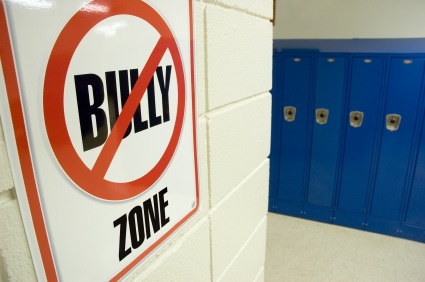WASHINGTON, D.C. — As media coverage of bullying has expanded over the past few years, so have mischaracterizations of the relationship between bullying and adolescent suicide, researchers and anti-bullying advocates said Tuesday at a national summit on prevention efforts.
An adolescent’s suicidal behavior is affected by individual, social and global risk factors, not just one factor such as being bullied, several researchers said during a panel discussion, “Discerning the Connection Between Bullying and Suicide for Better Prevention Strategies,” held during this year’s Federal Partners in Bullying Prevention Summit in Washington, D.C.
 Youth who report being subjected to aggressive acts by their peers are 40 percent more likely to report thoughts about suicide, said Michele Ybarra, president of the Center for Innovative Public Health Research. But after taking into account other contextual factors, like the adolescent’s self-esteem or family history, researchers say there’s still a lot they don’t know about the connection between suicide and bullying.
Youth who report being subjected to aggressive acts by their peers are 40 percent more likely to report thoughts about suicide, said Michele Ybarra, president of the Center for Innovative Public Health Research. But after taking into account other contextual factors, like the adolescent’s self-esteem or family history, researchers say there’s still a lot they don’t know about the connection between suicide and bullying.
The third leading cause of death for all 15- to 24-year-olds, suicide “really is a complex human behavior,” said Alexander Crosby, a medical epidemiologist with the CDC’s National Center for Injury Prevention and Control.
Over the last couple of years, the increased attention paid by news media, social media and filmmakers to bullying incidents that ended in young people killing themselves has resulted in greater public awareness of the disproportional impact of such behavior on vulnerable youth, stimulated grassroots involvement and motivated legislative action at the local, state and federal level, said Nicole Cardarelli of the American Foundation for Suicide Prevention.
But such “unprecedented attention” has also sensationalized any connection between bullying and suicide, especially with the media’s use of terms like “suicide epidemic” and “bullycide,” she said. She pointed to ReportingOnSuicide.Org, a media resource developed in collaboration with mental health organizations, journalism schools and media organizations, for recommendations on how journalists should report on the subject.
Sensational headlines can make suicide appear to be a common or acceptable response to being bullied, a particularly dangerous suggestion for young people who may be depressed or mentally ill, Cardarelli said. Such reporting ignores the multiple causes of suicidal behavior, spreads misinformation, and encourages copycat behaviors or “clusters” of suicide attempts, she said.
Moreover, much of the reporting emphasizes blame and punishment instead of encouraging discussion about ways to help both the person being bullied and the person doing the bullying, she said. Research shows both parties are more likely to report depression, suicidal thoughts or suicide attempts, she said.
“Young people involved in both kinds of behavior are at risk,” Cardarelli said.
Bullying is often just one more stress added to what an adolescent is already experiencing, said Crosby of the National Center for Injury Prevention and Control.
According to Crosby and Cardarelli, risk factors for suicidal behavior in adolescents include:
- Age. Older adolescents are more likely to attempt to kill themselves.
- Mental health issues like depression, anxiety or bipolar disorder.
- Stress from life events like a romantic breakup, an argument with a parent or legal problems.
- Peer and family violence. Adolescents who witness violence within their home or who are victims of abuse or neglect are more likely to attempt suicide.
- Family history of depression or suicide.
- Socio-economic status. Belonging to the lower part of the socio-economic scales increases the chances of an adolescent engaging in suicidal behavior.
- Substance abuse.
- Access to lethal means.































